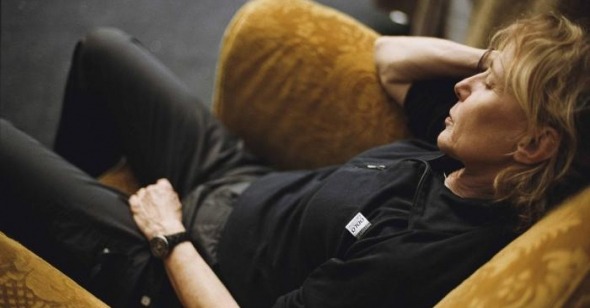Claire Denis: The Art of Seduction
In visualizing lives on the margins as sensually as another filmmaker might the halls of Versailles or the lights of a shimmering Christmas tree, French director Claire Denis has positioned herself, in our eyes at least, among the first rank of international auteurs. She does something nearly unthinkable in a world cinema scene obsessed with provocateurs like Haneke and Von Trier: she chooses to please rather than pillory her audience, invite into a dialogue around images rather than read sermons from on high. Like her compatriot and contemporary Olivier Assayas, Denis seems to have decided that, in the long, long shadow cast over French cinema by Godard’s early output, the most radical thing to do is not to eschew or batter narrative, but to wrestle with and redefine it, all without losing sight of the essential satisfactions of storytelling. This isn’t to suggest her films are films are easy on the mind, though they are always easy on the eyes. Her camera doesn’t just capture; it caresses.
While rarely calling attention to her own impeccable craftsmanship, Denis has forged a personal, identifiable aesthetic that registers just as immediately as any of Godard’s more radical formal interventions—or Haneke’s still-life needlings, or Hou Hsiao-hsien’s roving historical investigations, for that matter. Unlike the similarly off-handed work of Assayas (whose everywhere-at-once approach to filmmaking was long ago feted with the patented Reverse Shot treatment), Denis’s personal cinema is a product of a kind of seductive minimalism. Her hovering camera, structured ellipses, and sensual employment of music produce a feeling of voluptuous grace hard to shake even when her films turn violent.
From 1988’s Chocolat to 2004’s L’Intrus, Denis has moved from a more straightforward colonialist critique, based on her adolescent experiences in Africa, to something ever closer to abstraction. Yet what unites her films, what makes them oddly majestic, is that she never leaves her characters, or her viewers, completely adrift—even as she drifts in unexpected directions. Her narratives grow ever more challenging and her visual textures ever more supple, but there’s a core of emotional transparency that’s apparent in films as diverse as the bloody disgusting Trouble Every Day and the gently erotic Friday Night. Her latest, 35 Shots of Rum, is a gift, a lovely, becalmed look at a father-daughter relationship inspired by Ozu’s Late Spring that manages to elide any overt sentimentality while at the same time radiating a humane warmth. Its gentleness is a surprise—even if its genuineness is certainly not.
And for those tired of pliable female forms dominating the cinematic frame: Aren’t Denis’s heroes among the most beautiful, complicated men cinema’s offered since Nicholas Ray’s heyday? Considering Denis has worked with Ray acolytes Wenders and Jarmusch (a period of her career we’ve delved into alongside all of her major films), it’s not hard to consider such actors as Alex Descas, Isaach de Bankolé, and Grégoire Colin the transplanted European heirs to James Dean, Farley Granger, Christopher Plummer—men without pasts, but on missions. Colin himself perhaps put it best: “She films male bodies as if she were a homosexual man.” Always fascinated by the Other (less charitable critics might say she manages to exoticize while she comments on that very exoticizaton), perhaps Denis has made herself into an Other herself—all the better to affix her gaze.
For a filmmaker like Claire Denis, who traffics less in incident than in fleeting instants, less in the familiar comforts of story than in the ever-mounting pleasures of seduction, cinema is marked by slipperiness. Most of us at Reverse Shot are enamored of Claire Denis, so it was only a matter of time before we devoted a symposium to her, for we believe to be entranced with the cinema of Claire Denis is to be entranced with cinema itself. Those who don’t like Claire Denis . . . well there are six other arts, aren’t there?
*Also, be sure to check out Kevin B. Lee's video essay on L'Intrus, made in conjunction with the symposium.
